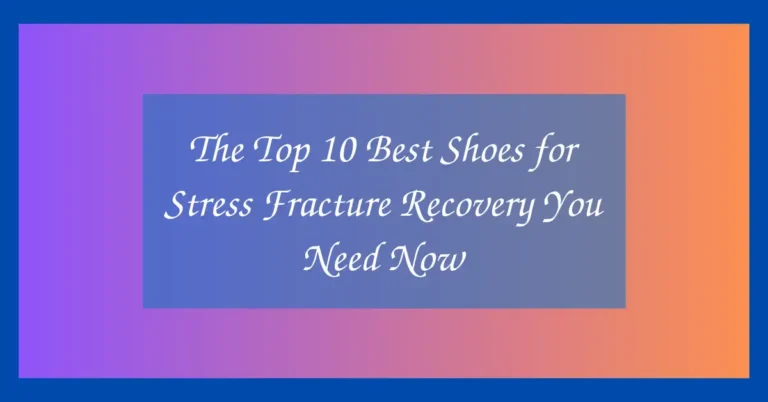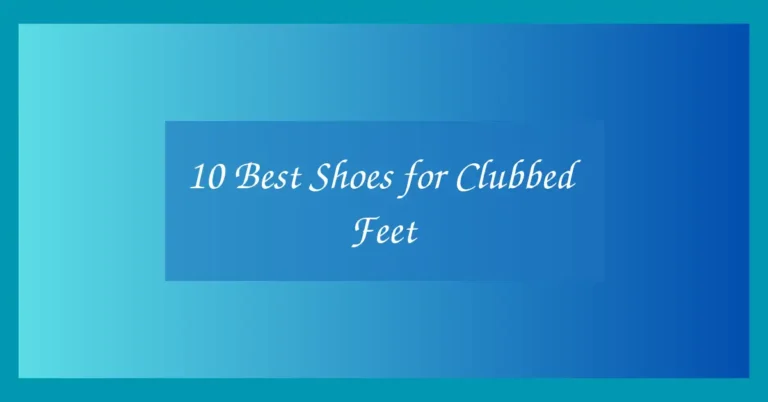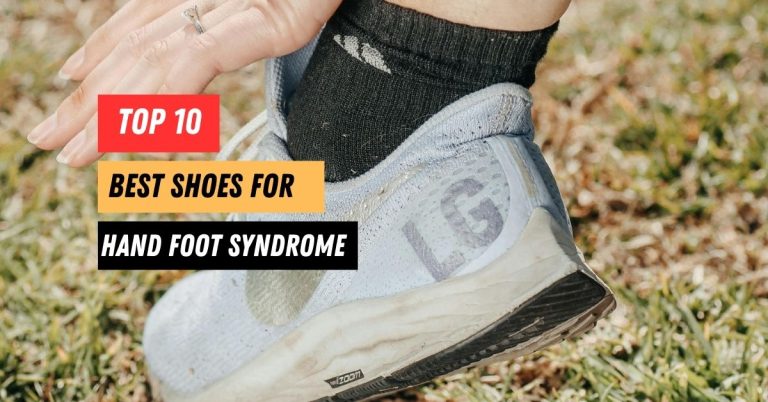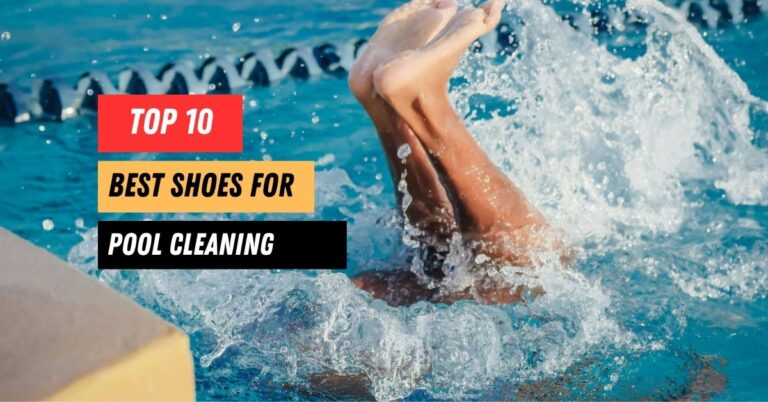Discover the 10 Best Shoes for No Arch Support
Choosing the right shoes is essential for everyone, but it becomes especially crucial for individuals with no arch, or flat feet. The absence of a natural arch can lead to various foot ailments, including plantar fasciitis, heel pain, and overpronation. The correct footwear not only enhances comfort but also significantly improves balance and stability, reducing the risk of injuries.
It can transform a simple activity like walking into a safer and more enjoyable experience. This article aims to guide you through selecting the best shoes for those with flat feet, ensuring that your choice supports your foot health and aligns with your lifestyle needs.
Top 10 Shoe Reviews for Flat Feet
1. Brooks Addiction Walker
The Brooks Addiction Walker is a prime choice for those seeking maximum support and comfort for flat feet. Designed with a durable, energy-returning MoGo midsole, this shoe provides exceptional cushioning and shock absorption. The Extended Progressive Diagonal Rollbar ensures precise control, guiding the body back into its natural motion path.
Its full-grain leather upper not only offers a sophisticated look but also enhances durability. Furthermore, the slip-resistant outsole provides excellent traction, making it suitable for various terrains.
-
Pros:
- Superior arch support tailored for flat feet
- High-quality, durable leather upper
- Effective slip-resistant outsole
- Energy-efficient MoGo midsole for better cushioning
- Stylish design that suits multiple occasions
-
Cons:
- Heavier than typical walking shoes
- Limited color options available
- May require a break-in period for optimal comfort
2. Asics Gel-Kayano 27
The Asics Gel-Kayano 27 excels in stability and comfort, making it an excellent choice for runners with flat feet. It features a Dynamic DuoMax Support System that reduces heel strike impact, enhancing stability and support. The shoe’s FlyteFoam technology offers remarkable bounce back and responsiveness throughout long runs.
With its breathable mesh upper, the Gel-Kayano 27 keeps your feet cool and dry. Additionally, the AHAR outsole offers exceptional durability and traction on different surfaces.
-
Pros:
- Enhanced stability with DuoMax Support System
- Responsive cushioning with FlyteFoam technology
- Breathable mesh upper keeps feet cool
- Durable AHAR outsole
- Suitable for long-distance running
-
Cons:
- Pricier than some other options
- Some users report a snug fit, recommending sizing up
- May feel slightly stiff initially
3. New Balance 990v5
The New Balance 990v5 combines a classic look with modern technology, ideal for everyday wear and light jogging. It offers excellent arch support and cushioning with its ENCAP midsole technology, which combines soft foam with a durable polyurethane rim. The dual-density collar foam prevents irritation around the ankles, enhancing comfort.
The shoe’s suede and mesh upper provides durability and breathability, while its blown rubber outsole ensures good traction.
-
Pros:
- Exceptional support and cushioning
- High-quality, breathable materials
- Stylish design suitable for casual wear
- Durable construction
-
Cons:
- Higher price point
- Some may find the design bulkier than other sneakers
- Limited flexibility compared to more athletic-focused shoes
4. Saucony Guide 13
The Saucony Guide 13 is tailored for runners who need both support and flexibility. Featuring a medial TPU guidance frame, the shoe ensures proper alignment and support for flat feet. Its PWRRUN cushioning provides a just-right softness that’s responsive enough for long runs.
The shoe’s engineered mesh upper offers a lightweight, dynamic fit, enhancing overall comfort and air circulation. Additionally, the TRI-FLEX outsole optimizes traction and durability.
-
Pros:
- Medial support frame for stability
- Responsive PWRRUN cushioning
- Lightweight, breathable upper
- Excellent traction with TRI-FLEX outsole
- Available in a variety of colors
-
Cons:
- Not as cushioned as some other models
- Some users report it runs small
- May not be suitable for extremely rugged terrains
5. Nike Air Zoom Structure 22
The Nike Air Zoom Structure 22 stands out with its sleek design and effective support for flat-footed walkers and runners. It features a Flywire cable integrated with the laces for enhanced midfoot security. The Dynamic Support system in the midsole provides the stability needed without added weight or stiffness.
Its engineered mesh upper and partial bootie ensure a comfortable fit and breathability. The Duralon blown rubber outsole offers durable traction.
-
Pros:
- Sleek, modern design
- Dynamic Support system for lightweight stability
- Breathable, comfortable fit
- Good traction on various surfaces
-
Cons:
- Some reports of less durability in the sole
- May not be as supportive for severe overpronation
- Narrow fit, which might not suit all foot types
6. Orthofeet Proven Heel and Foot Pain Relief Shoes
Orthofeet shoes are specifically engineered for flat feet, focusing on therapeutic features. These shoes offer anatomical arch support, a smooth stride with cushioning soles, and a wide toe box that alleviates pressure on bunions and hammertoes.
The premium orthotic insoles with anatomical arch support straighten posture and enhance comfort from heel to toe.
-
Pros:
- Exceptional therapeutic features for foot and heel pain
- Excellent arch support and cushioning
- Designed to accommodate foot conditions like bunions
- Durable construction and stylish for therapeutic shoes
-
Cons:
- May look more orthopedic than typical athletic shoes
- Sizing can be tricky, often recommended to size up
- Higher price point due to specialized features
7. Adidas UltraBoost ST
Adidas UltraBoost ST is a popular option for those requiring extra stability. It features dual-density Boost cushioning on the medial side to ensure energy return and stability for flat-footed runners.
The Primeknit upper adapts to the foot’s natural expansion and helps to reduce irritation, while the flexible Stretchweb outsole naturally flexes for a smoother ride.
-
Pros:
- Responsive Boost cushioning provides comfort and energy return
- Primeknit upper for a snug, adaptive fit
- Excellent traction with Continental Rubber outsole
- Stylish and available in various colors
-
Cons:
- Premium price may not be suitable for all budgets
- Some runners might find it too cushioned for faster paces
- Heavier than some competing stability shoes
8. Merrell Jungle Moc
The Merrell Jungle Moc is ideal for casual wear but robust enough for those with flat feet who need support throughout the day. It features an air cushion in the heel for shock absorption and stability, a supportive footbed, and a durable suede upper.
The slip-on design makes it convenient for everyday use.
-
Pros:
- Air cushion in the heel absorbs shock and adds stability
- Easy slip-on design
- Durable and comfortable for all-day wear
- Versatile for both casual and outdoor activities
-
Cons:
- Casual design not suitable for formal occasions
- Limited arch support compared to more specialized options
- Can be slippery on wet surfaces
9. Hoka One One Bondi 7
Hoka One One Bondi 7 is highly regarded for its exceptional cushioning and support, making it ideal for flat-footed individuals. The full EVA midsole offers signature Hoka cushioning, while the breathable mesh upper keeps feet comfortable and dry.
Its Meta-Rocker geometry ensures a smooth transition from heel to toe.
-
Pros:
- Maximum cushioning ideal for long periods on your feet
- Meta-Rocker for a smooth stride
- Breathable mesh upper
- Available in a wide range of sizes and widths
-
Cons:
- Some users find the design bulky
- High stack height may not appeal to all
- Price may be high for those on a budget
10. Altra Escalante 2.5
Altra Escalante 2.5 is favored for its balanced cushioning and Zero Drop platform, which encourages natural foot positioning, a significant benefit for those with flat feet. Its FootShape toe box allows the toes to spread naturally for better stability.
The engineered knit upper provides a snug, supportive fit that adapates to your foot’s movements.
-
Pros:
- Zero Drop platform for natural foot alignment
- FootShape toe box for enhanced stability and comfort
- Responsive Altra EGO midsole
- Lightweight and flexible for running or casual wear
-
Cons:
- Some durability concerns over the sole
- May not provide enough support for severe overpronators
- Minimalist look might not appeal to all users
Buyer’s Guide
When searching for the best shoes for flat feet, it’s important to consider several key factors that affect their suitability and effectiveness. Here’s a detailed look at what to consider:
-
Arch Support: The most critical feature in shoes for flat feet is robust arch support. Shoes with enhanced arch support help distribute pressure more evenly across your feet, minimizing pain and discomfort. Look for shoes that have a contoured footbed or insoles designed for low arches.
-
Durability: People with flat feet need shoes that are not only supportive but also durable. Shoes that quickly lose their shape can lead to inadequate support, causing foot and ankle strain. Opt for footwear made from high-quality materials that can withstand regular wear and tear without compromising on comfort.
-
Grip and Stability: Shoes with excellent traction are essential, particularly for flat-footed individuals who may be prone to slipping due to improper foot alignment. A good grip helps maintain balance and stability on various surfaces, reducing the risk of falls.
-
Comfort: Comfort goes hand in hand with arch support. The right shoes for flat feet should have a cushioned sole to absorb shock and reduce the impact on your feet as you walk. This is particularly important to prevent exacerbation of foot fatigue and pain.
-
Material: Breathable materials like leather or synthetic mesh provide ventilation and keep the feet cool and dry, preventing blisters and other discomforts. Additionally, flexible materials can adapt to the shape of your feet, providing better comfort and support.
-
Fit: Ensure the shoes fit well without being too tight or too loose. Shoes that do not fit properly can lead to foot injuries or exacerbate existing conditions. It’s often advisable to shop for shoes in the late afternoon when your feet are most swollen to get a better fit.
-
Style: While function is paramount, the style of the shoes also matters, especially if you wear them daily. Fortunately, many brands offer orthotic-friendly shoes that are stylish without sacrificing comfort and support.
FAQ
Q1: How do I know if I have flat feet?
The easiest way to check is to wet your feet and stand on a flat surface that will show your footprint. If you see a complete imprint of the bottom of your foot, you likely have flat feet.
Q2: Are there specific brands that are good for flat feet?
Yes, some brands specialize in orthotic footwear or offer models particularly suited for flat feet. Brands like Brooks, Asics, and New Balance are often recommended for their robust arch support and cushioning.
Q3: Can I use regular insoles with flat feet?
While regular insoles may provide some level of comfort, it’s best to use orthotic insoles designed specifically for flat feet. These insoles will offer better arch support and alignment for the foot.
Q4: Is it necessary to wear flat feet shoes all the time?
It’s beneficial to wear shoes with proper support as much as possible to avoid discomfort or injuries. However, there may be times or activities where other types of shoes are more suitable.
Q5: Can children with flat feet wear regular shoes?
Children often develop arches as they grow, but those with persistently flat feet can benefit from shoes with arch support. Consult a pediatric podiatrist for advice tailored to your child’s needs.
Q6: How often should I replace my flat feet shoes?
Typically, replace your shoes every 300-500 miles of walking or running, or if you notice the arch support weakening, which can happen every 6 to 12 months with regular use.
Q7: Are there exercises that can help strengthen flat feet?
Yes, exercises like toe curls, heel stretches, and arch lifts can strengthen the muscles around your arch and potentially improve the condition of flat feet over time.
Conclusion
Selecting the right shoes is vital for individuals with flat feet, emphasizing the need for safety and functionality in their footwear. Properly fitted shoes with adequate support and cushioning can drastically improve comfort and mobility, while also reducing the risk of injury. This comprehensive guide aims to help you find footwear that meets both your functional needs and personal style.







